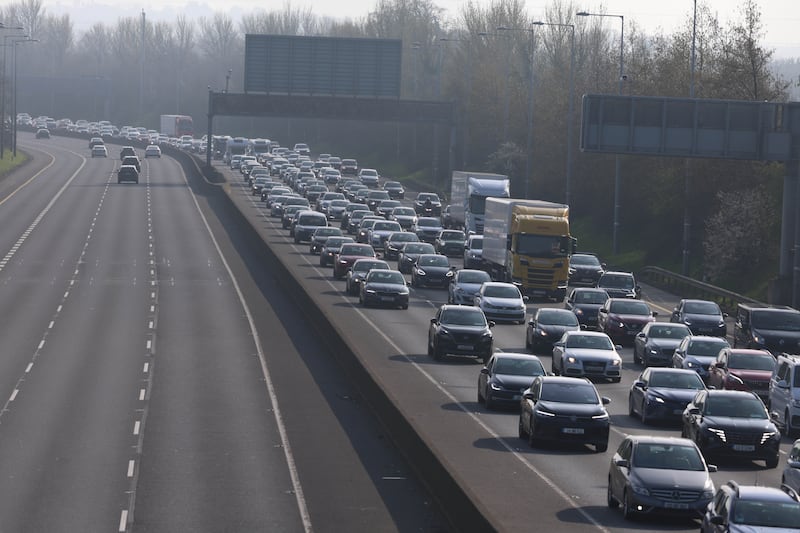It has been in gestation for almost two decades now, but at last, it seems, a plan to automatically enrol hundreds of thousands of workers around the State into a pension scheme looks set to come to fruition.
Auto-enrolment (AE), which is expected to support as many as 750,000 workers, is expected to be established by the end of 2023, with the first payments made during 2024.
The scheme works by helping workers, who may otherwise have no other private entitlement to a pension, receive a boost to their savings. It means that for every €3 a worker saves, a further €4 will be credited to their account (€3 from their employer and €1 from the State). Workers may also be entitled to a State pension.
During the summer, the general scheme for a bill establishing the system was approved, with the Bill expected to be published early next year.
READ MORE
However, not everything has yet been finalised. In advance of the publication of a Bill, the Oireachtas Joint Committee on Social Protection has embarked upon a consultation process (yes, yet another one). Here we take a look at some of these submissions, and consider the detail yet to be determined.
Broader scope
AE is set to benefit as many as three quarters of a million people. However, respondents to the submission process argue that it should be wider, and that the eligibility criteria should be broadened.
As it stands, those eligible for auto-enrolment must be at least 23; have an annual income of at least €20,000; and not currently be a member of an existing workplace scheme into which an employer contributes.
However, Insurance Ireland, which represents the insurance industry, argues in its submission that this isn’t wide enough and it leaves “vulnerable groups, young people, single breadwinner households and single parents outside the scope”.
‘A person could have seven wasted years between ages 16 and 23, when they have started their working lives but are not saving towards a more financially secure retirement’
— Irish Congress of Trade Unions
It also excludes young workers at a key point in their pension-saving lives.
“Particularly people without secondary education or early school leavers must be brought into the system as soon as possible to ensure that they can build-up sufficient pension savings. That is why we call for removal of the lower age limit.”
Ictu, which represents 44 trade unions across the State, agrees that 23 is too old, and in its submission argues that it should be lowered to 16, in alignment with the PRSI minimum-age threshold.
“A person could have seven wasted years between ages 16 and 23, when they have started their working lives but are not saving towards a more financially secure retirement,” it argues.
There is also a concern that women are being treated unfairly by the system.
While it will be possible for younger people to opt into the scheme, Insurance Ireland argues that it disproportionately disadvantages “low-income, part-time workers, a vast amount of whom are women, and young employees”.
For example, it’s not yet clear what happens in the case of women who take maternity leave. Will they be entitled to top up their pensions to account for gaps in service? Will their employers continue to contribute they’re on leave?
At the moment, it seems that it won’t be possible to make top-up payments to an AE pension scheme, which does make the issue of other contributions unclear.
There is also an argument that access should be strengthened for the self-employed. Although, in the future, such workers will likely be able to opt into the scheme, Ictu says that this should happen now, with the business they provide work or services to liable for the employer contribution.
There are also doubts expressed as to whether there should be a minimum earnings limit, currently €20,000. In the UK for example, the minimum age for the scheme is 22, while the minimum wage is just £10,000 (€11,600) and if you earn more than £6,240, you have the right to opt in. In New Zealand, there is no threshold for KiwiSaver, while the 5,400 Australian dollar (€3,460) minimum threshold in Australia was eliminated in July.
The Ictu fears that such a threshold “increases the incentive to keep wages below the earnings threshold so as to avoid the obligation to contribute to their employee’s pension pot”. As a result, it argues that there should be no lower income threshold.
Insurance Ireland has also called for a bonus, similar to the 1,000 New Zealand dollar (€600) “KickStart” bonus, which was originally offered in Kiwisaver, for certain low income earners, to be part of the scheme.
Potential for higher contribution rates
The proposed Government contribution of €1 for every €3 the worker saves under auto-enrolment is equivalent to a state subsidy of 33 per cent, or tax relief of 25 per cent.
However, this puts the scheme at odds with tax relief arrangements on existing private occupational pension schemes in Ireland, which gives workers on the standard rate on income tax relief at 20 per cent, and those on the higher rate of tax, relief at 40 per cent. It will be more attractive for those paying tax at the standard rate but very much less attractive for those on the higher rate.
As such, Ictu wants the State contribution increased to €1 for every €2.50 a worker saves, as this would “mirror the value of the current 40 per cent tax-relief arrangement”.
Drawdown
Another area where there is some confusion is what happens to your pension in retirement. At present, the message is that savers will be allowed to withdraw 100 per cent of their pension pot upon retirement – although the plan is that some form of drawdown facility will be introduced over time.
Insurance Ireland, however, argues that this is inappropriate and there should be certainty at the outset.
Brokers Ireland is concerned that a 100 per cent lump sum would not provide a retirement income, ‘and may indeed lead to some participants spending the full fund within a short period’
“The launch of the AE system will be the biggest pension event in the history of the State and communicating on this temporary basis will create expectations which will be hard to shift when the structure changes to accommodate drawdown,” the group says.
It suggests that savers be given the option of a 25 per cent lump-sum, with 75 per cent of their fund moving into a drawdown product such as an Approved Retirement Fund (ARF) or an annuity.
Annuities could be provided by the State, Ictu argues, as this would presumably offer a better rate for retiring savers than what might be achieved on the open market.
For its part, Brokers Ireland, which represents insurance brokers, is concerned that a 100 per cent lump sum would not provide a retirement income, “and may indeed lead to some participants spending the full fund within a short period”.
Access and death
Under the current proposals, savers will be able to access their auto-enrolment retirement funds at the same age they get access to the State pension – so typically 66.
However, Brokers Ireland argues that all other pension-product benefits can be taken from at least age 60, and that the rules under AE should be the same.
“Aligning normal access to AE savings at the State pension age puts the AE scheme at odds with other retirement savings schemes and products, where, in general, access to funds it allowed from at least 60 onwards (or from 50 onwards in some cases). Therefore, the minimum AE scheme access age should be 60,” the group argues.
Another issue is with regard to what happens in the event of death. Brokers Ireland notes confusion over how a person’s AE fund, payable in the event of their death before benefits have been taken, is to be taxed. The group says it appears that it will both be subject to PAYE, but also “might be taxed as if paid to the AE participant on retirement and hence potentially tax-free”.
In any case, it argues, either proposal is at odds with the treatment of current pension products such as personal retirement savings accounts (PRSAs) and retirement annuity contracts (RACs), where, on death before benefits are drawn, the full, accumulated fund is paid out to the deceased’s estate tax-free.
“The AE scheme should adopt a similar approach, as otherwise death in the AE scheme before benefits are taken would impose a financial tax penalty on next of kin, which would not apply if the AE participant survived to retirement to take their AE funds or if they had saved for retirement through a PRSA product,” the group says.




















